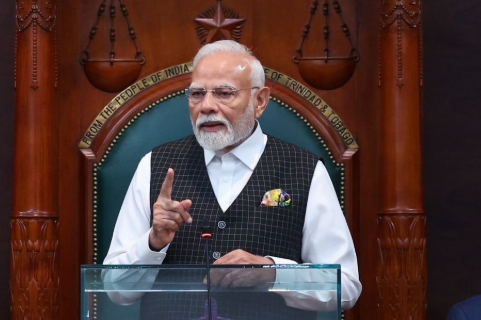
A meeting that could shake the very foundations of global politics is set to take place on August 15, 2025, in Alaska, USA. Russian President Vladimir Putin and U.S. President Donald Trump will meet face-to-face, with the primary agenda being nothing less than the division of Ukraine. But beyond the headlines, the question for India is clear — how will this meeting affect New Delhi’s strategic and economic position? Could Trump use India as a bargaining chip in his deal with Putin? Will the heavy tariffs Trump has imposed on India be lifted, or will they go even higher?
India’s Diplomatic Moves Before the Summit
Just days ago, India’s National Security Advisor Ajit Doval visited Russia. Shortly after, Prime Minister Narendra Modi spoke directly with Putin over the phone. Modi even tweeted about the “very good and detailed conversation” with his “friend President Putin,” thanking him for sharing the latest developments on Ukraine. Within hours of this conversation, Trump took to his social media platform Truth Social to announce his meeting with Putin in Alaska.
Why Alaska Matters
Alaska itself carries a unique geopolitical history — once part of the Russian Empire, it was sold to the United States in 1867. Even today, many in Russia view the sale as one of their nation’s greatest historical mistakes. This symbolic setting only adds to the political drama of the upcoming talks.
Trump’s Pressure Tactics and Tariffs on India
According to U.S. media reports, Trump’s main target in this meeting remains Russia, but India is being used as a pressure point. Earlier this year, Trump imposed a total of 50% tariffs on Indian goods — first 25%, then another 25% — with the intention of pushing India to scale back its economic relationship with Russia. This includes the purchase of Russian oil, which has been a vital part of India’s energy strategy since the Ukraine war began.
What Putin Wants from Ukraine
Putin’s position has been clear — to stop the war, Eastern Ukraine must become part of Russia. This includes a significant portion of Ukrainian territory. Trump, on the other hand, is reportedly proposing a “territory swap” deal, where Russia could take certain areas while conceding others. But Putin has given no sign of willingness to give up any land — only to take more.
If Trump were to agree to Putin’s demand, the result could reshape U.S.–Europe relations permanently. NATO’s security model would be shaken, and Europe, already skeptical of relying on the U.S. for protection, might be forced to rethink its entire defense strategy.
Impact on India — Two Levels of Concern
For India, the Alaska meeting has direct consequences on two fronts:
Tariff Pressure – Trump may push Putin to reduce oil sales to India in exchange for lifting tariffs. If Putin refuses, India could face even higher tariffs from the U.S.
Geopolitical Balance – If a U.S.–Russia deal happens, India may face difficulties in securing cheap oil and defense supplies from Russia. If the deal fails, Trump might increase tariffs on both China and India, further squeezing India’s trade and energy security.
Possible Summit Outcomes
The Alaska meeting is unlikely to resolve everything in one go. Putin could raise the issue of why India is being targeted, while Trump might respond that tariffs can be lifted if Russia makes concessions on land in Ukraine. Given their entrenched positions, it may take two, three, or even five separate summits to reach a breakthrough — with moments of anger, threats, and sharp public statements in between.
If the talks collapse, Trump could impose China-style tariffs on India and attempt to completely halt India’s purchase of Russian oil. This could create new blockages in global trade, with significant consequences for India’s economy. On the other hand, if a deal is struck, India might still get Russian oil, albeit at less favorable prices, but the tariff war with the U.S. could ease.
India’s Strategic Balancing Act
This is a critical moment for India to display strategic balance. New Delhi is unlikely to abandon Russia under U.S. pressure, but it also won’t damage ties with Washington because of Moscow. This tightrope diplomacy could place India in one of the strongest positions in world politics, leveraging relationships with both sides while protecting national interests.
The August 15, 2025, Putin–Trump meeting in Alaska is therefore not just about Ukraine. It is deeply linked to India’s economy, energy security, and global standing — and could mark the start of a new geopolitical chapter.
Disclaimer:
This article is based on publicly available news reports, political statements, and geopolitical analysis. The information, interpretations, and projections presented are for informational purposes only and do not constitute official policy statements or investment advice. Readers are encouraged to verify facts independently before drawing conclusions.




